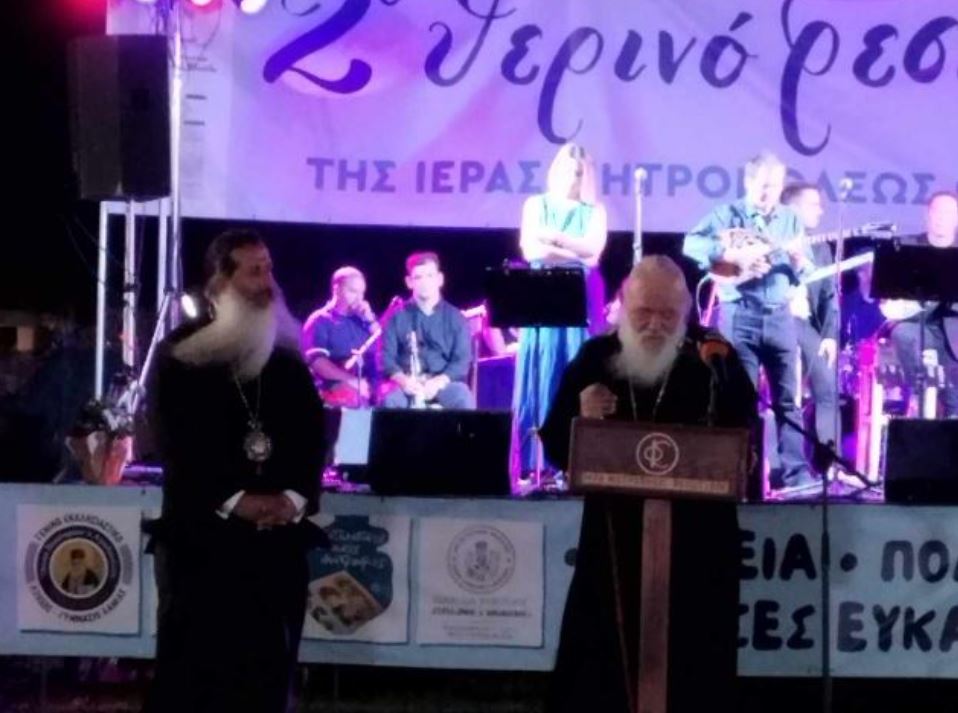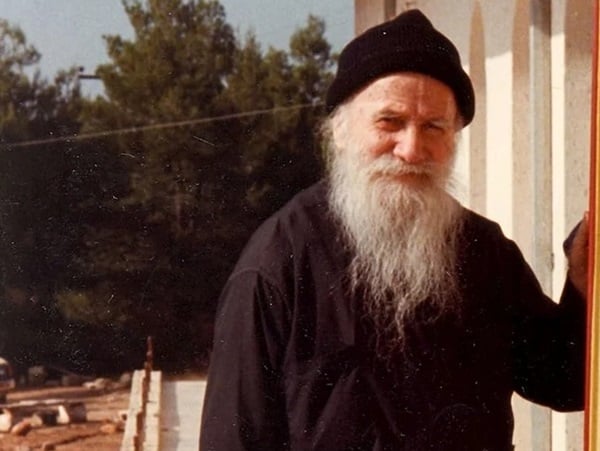A Fellowship of Wonderworkers
By: Nicholas Cotros
The feast day of Saint Michael the Archangel (also known as Michaelmas) is celebrated by Eastern Orthodox Christians on November 8th, and by Western Christians on September 29th. I was recently introduced to an icon of Saint Michael, and an opportunity to speak with artists, priests, and friends to learn about the history and creation of this icon and others.
Veryle Lynn Cox, the artist and iconographer who crafted this icon of Saint Michael the Archangel, has studied at the Royal Academy of Fine Arts in Brussels, Belgium. Of Episcopalian faith, Mrs. Cox may be unique in her ability to craft fine, Byzantine-style icons, like those venerated by Eastern Orthodox communities in Greece and Russia, in Prague, Brussels, and elsewhere. A casual mention of her work among friends piqued the interest of family-friend Dr. Nikos Linardakis, who had long-hoped to commission a Byzantine-style icon in the image of Saint Michael the Archangel.
One evening, Mrs. Cox provided me with a FaceTime-style tour (and demo!) of her studio located in an upstairs room of their Athens, Georgia home. “This is Lake Lure, North Carolina,” she said, pointing the camera at a calm painting of blue and white sky and water. “And it was a beautiful place to live. This is a sculpture that I did,” she added. “It is reflecting this mountain, which we called Sleeping Lady Mountain.” She later explained that the word “icon” means “image,” and that an icon is “written,” not painted. “Instead of painting it,” she said, “it is the idea that, through the application of paint, you are telling the story of a holy figure.”
This icon of Saint Michael the Archangel, created for Dr. Linardakis, was inspired by the original, 14th century icon first-inspired through Andrei Rublev. Unique to this icon is its oklad, or metal frame, placed along the icon’s border, transcribed with the words of an old, Catholic prayer. Mrs. Cox, and other iconographers, use the technique of repoussé, or “re-pushing,” to raise words and prayers across the soft, metal exteriors of icons. Father Daniel Armatas, a friend of Dr. Linardakis, assisted with the prayer’s choosing. Such icons deliver peace, explained Father Armatas, as he cited Saint Seraphim of Sarov: “Acquire the Spirit of Peace, and a thousand souls around you will be saved.”
![]()
Saint Michael the Archangel is a universal figure and is recognized by Christianity, Judaism, and Islam. In past iconic depictions, his large wings extend outward, and his curly hair is braced with a headband. This icon of Saint Michael, though, shows his wings breaking across the pewter, metal frame.
The linden wood board of this icon was provided by Father Dimitri Kulp of St. John’s Workshop in Wisconsin. Mrs. Cox explained that the wooden board is first coated with a solution of gesso. A batter-like mixture of animal hide glue, whiting, minerals, and marble dust, gesso is quite sticky. After this “stuff” is heated in a double-boiler, it is then scraped across the board. In this instance, while scratching across the wood with her sharp tools, Mrs. Cox also spoke of a delicate linen that must first be applied as a foundation. After the linen is founded, she explained, twelve to fifteen layers of gesso are applied and sanded until the final layer is “as smooth as marble.”
![]()
“Let me tell you about gold!” Mrs. Cox continued. “There’s the easy way, and the hard way… I do the hard way,” she laughed. Before a thin sheet of gold is added to the icon, a base layer of clay must first be applied. She introduced a mason jar of “bole,” which includes clay, hide glue, honey, and water. As the substance is added, it is smoothed with fine sandpaper. Then, as the gold sheet is added to the clay, an agate stone is used to polish the material. She also demonstrated how the iconographer must first breathe on the clay so that the gold will stick. “I love this part,” she said. “That is symbolic, because the gold represents God, and the clay represents man, and breathing on it represents the breath of the Holy Spirit.”
Next, Mrs. Cox described the perfect circle that is drawn around the Saint’s visage. Each red “alpha line” is complemented by a white “omega line,” another perfect circle traced along the outside of the first. Gritty, dark paint, described as “chaos” or “roshkrish,” in Russian, then fills the icon. Before she covers the icon in dark paint, though, Mrs. Cox etches small scratches into the board, tracing important features of the image. Using the indentions as a guide, she highlights an outline with thick, black strokes of paint.
![]()
Mrs. Cox explained that she then works “from dark to light.” Using the dark paint as a foundation, she paints many layers of highlights and “floats.” Highlights are lighter shades of paint that define the icon. Floats follow each layer of highlights and are used to mute colors and cover mistakes. The final applications of paint are the white “omega” line and touches of white paint that grace the Saints’ eyes.
![]()
![]()
![]()
![]()
Nikos Linardakis, accompanied by the iconographer, Veryle Lynn Cox, and a few others, attended the ceremony of this icon’s blessing at Saint Philothea’s Greek Orthodox Church in Watkinsville, Georgia. As is customary of icons, it was first held by the church for forty days. Father Anthony Salzman of Saint Philothea spoke of the icon and its blessing.
Father Anthony said:
When Christ descended into the River Jordan, it was not that He was cleansed, but He, the maker of all things, descended into the water and cleansed it, and it cleansed the world. It was a way of sending grace. That is what physical objects are, they are a means of spiritual grace. We have bread and wine that become body and blood. We have oil for anointing and forgiving and healing. And we have icons to make visible the invisible. So, we anoint them with holy water, and we pray, then we take them to our homes.
Father Anthony also defined a distinction, that it is important to not over-spiritualize an icon’s artistic elements, and that we can more simply recognize the Saint. “By their very essence, [icons] have the ontological, hypostatic nature represented through the image,” he said. “And, therefore, by their nature, they are holy, because they are Saints.”
![]()
Christos Linardakis, brother of Nikos Linardakis, has a Masters of Theology from Saint John of Damascus Institute of Theology, with a concentration in Canon Law. In partnership with the late Metropolitan Iakovos of Chicago, Mr. Linardakis hosted an exhibit of icons at the Hellenic Museum in Greektown, Chicago. Another such exhibit was hosted by Mr. Linardakis and Reverend Aleksander Petrovic at New Gracanica Monastery, the Serbian church in Lindenhurst, Illinois.
Detailing some preparations of iconographers, Mr. Linardakis explained:
There are certain presuppositions that you take into account before you paint the icon. One is to make sure you’re praying, and you’re fasting, and you’re taking communion. So, when you write the icon, traditionally, you are not writing the icon, it is God’s hand that is writing the icon. It is God that is giving you the power and the insight into how that icon is being written, and you are writing it based on tradition and what others have done before you.
![]()
Mr. Linardakis and I also discussed the somewhat stern expression that most Byzantine-style icons share. “Stern is not the word, but they are… they are at a different point than a normal human being would be.” Father Anthony added. “The Saints, they are not smiling,” he said. “People ask me, ‘Why aren’t the Saints smiling?’ Well, smiling is an affected state. So, in your normal state of existence, you are not smiling. You are just there. You just are. Instead of happiness, they should represent joy. Instead of anger or seriousness, they should represent sobriety or wisdom.”
![]()
![]()
![]()
Dr. Nikos Linardakis is an accomplished executive physician. While attending a humanitarian mission at the Blossom Health Care Center in Kabul, Afghanistan, he endured some difficult, sometimes dangerous, challenges. In these fearful moments, he would often recite quiet prayers to Saint Michael the Archangel. When an overwhelming calm uplifted his spirits, he knew that Saint Michael had protected him. In one instance, he and a friend found a white feather that must have fluttered and softly graced the floor. He later promised to recognize Saint Michael’s oversight with the creation of an icon in his image. Dr. Linardakis is a recipient of the 2014 Blossom Humanitarian Award, which recognizes his and his colleagues’ devotion for the citizens of Kabul and Afghanistan as “limitless.”
![]()
![]()
I believe that Archangel Michael has before appeared in my defense. Whether when protecting me during experiences in Afghanistan, or with colon cancer, or when driving my car in severe weather, I have often found a sign of Michael, like seeing a feather, and believe he has served as my guardian angel several times in my life. I believe that he has delivered me to safety, and this icon commemorates my love and appreciation for his tender care.” – Dr. Nikos Linardakis
Iconographer Veryle Lynn Cox also mentioned that, during the making of this icon, she too discovered a random feather. Now, in the bottom corner of the icon’s oklad, metal frame, is a feather that remembers Saint Michael’s hopeful presence in her workshop.
Saint Michael the Archangel, defend us in battle. Be our defense against the wickedness and snares of the Devil. May God rebuke him we humbly pray; And do thou, O Prince of the Heavenly Host, by the power of God, cast into hell Satan and all evil spirits who wander the earth seeking the ruin of souls. Amen.
![]()
H αναδημοσίευση του παραπάνω άρθρου ή μέρους του επιτρέπεται μόνο αν αναφέρεται ως πηγή το ORTHODOXIANEWSAGENCY.GR με ενεργό σύνδεσμο στην εν λόγω καταχώρηση.
Ακολούθησε το ORTHODOXIANEWSAGENCY.gr στο Google News και μάθε πρώτος όλες τις ειδήσεις.


















